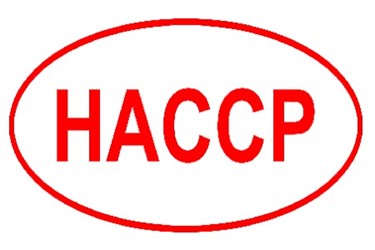10 HACCP Mistakes Highlighted At Beef Industry Conference
By Laurel Maloy, contributing writer, Food Online

Didn’t attend this year’s NAMA Conference? You may want to talk to someone who did. Held annually, the conference’s speakers touch on every subject affecting the beef industry and safe processing
The North American Meat Association (NAMA) held its annual Pathogen Control and Regulatory Compliance conference in Chicago, IL on Oct 15 and 16. Since 2007 this event has brought together the top experts in their fields in order to address the issues surrounding food safety in the beef industry. Scheduled speakers included eight doctors from institutions such as the Food Safety and Inspection Service (FSIS), the Centers for Disease Control and Prevention (CDC), and the U.S. Animal Meat Research Center (MARC). A total of 12 speakers touched on topics including: Beef Pathogens and Human Illness, FSIS Policy Update & 2015 Agenda, and Avoiding HACCP Mishaps.
Norm Robertson, the executive associate director for regulatory issues at NAMA, discussed the 10 most-common mistakes beef processors make when implementing HACCP programs. Below, are these 10 HACCP errors in the beef industry.
- Direct Observation Must Include Examination. Direct observation is one of three verification activities required by Title 9 of the Code of Federal Regulations, 9 CFR 417.4 (a) (2)(i-iii), entitled Validation, Verification, Reassessment. With only one exception — in regard to monitoring and/or corrective action — every element of a facility’s HACCP should be subject to thorough examination. This will ensure your HACCP program is working effectively and doing what it is designed to do.
- Document every decision for action/Inaction In Your HACCP Program. Above all else, document, document, document! This is where many facilities get into trouble. FSMA is even more stringent on recordkeeping requirements. If you make, or don’t make, a change to your HACCP program, be sure to document the reasons for the action/inaction. Be clear, concise, and include the knowledge- or science-based reasoning. Also, be sure to document the dates and the people responsible for Critical Control Point (CPP) monitoring and direct observation.
- Maintain Documents To Support Your Facility’s HACCP Methodology. Again, the emphasis is on documentation. If your facility is monitoring and performing verification at less than 100 percent, your documentation must support the reasoning behind the decision. All products being produced must be monitored, while verification of the CPP methods must ensure HACCP is functioning as intended.
- Notify FSIS Within 24 Hours Of Adulterated Or Misbranded Product. This, also, is a matter of documentation. When notifying FSIS, you may want to utilize email, or at least follow up the phone call with an email. In the event email is not an option, annotate the date, the time, the name of the person you spoke with, and include a detailed synopsis of the discussion. Then, once you are able to send a confirmation email, do so.
- Document Adequate And Acceptable HACCP Corrective Actions. Robertson explains that the most-common mistake here is putting preventive measures in place that don’t correctly address or correct the cause of the CPP error. However, above all else, document the preventive measures, the whys, and wherefores. Writing it down tends to clarify the action in a way that may highlight its inability to correct the error.
- Define lots in a defensible manner. The FSIS guidance is unclear on what comprises a “lot.” For example, in FSIS Directive 10,010.1, D.1, “The establishment is responsible for defining the sampled lot.” Each processing plant works differently. The purpose of the lot is to be able to easily identify where adulteration or contamination may have occurred in respect to traceability. Decide what comprises a “lot” in your facility, document it, and don’t veer from its direction. If your facility makes changes to how a “lot” is determined, document it and follow the protocol carefully.
- Sample Smartly. The PCA recall may be the most-telling example of this. In an effort to meet its production demands, PCA had shipped the product prior to the test results being received back. That’s kind of like closing the barn door after the horse escapes. Robertson advises meat processors to be sure they have control of the entire lot of the potentially-affected product when deciding to pull a sample test.
- Avoid Cherry Picking From Backup Documentation. If at all possible, one document should contain all of your critical parameters. Pulling single, critical parameters from a number of different documents is not viewed favorably by FSIS.
- Carefully Review Incident Records And Appeal As Necessary. Mistakes are inadvertently made in Non-Compliance Records (NRs), which are then input to the Public Health Information System (PHIS). Incorrect records may inaccurately identify potential compliance concerns. NRs and Memorandums of Interview (MOIs) will also be used to build a case for enforcement. Review them thoroughly and take the time to appeal as necessary.
- Creating And Implementing A More-Efficient Allergen Program. While meat processors are carefully monitoring and avoiding cross-contamination, Robertson says other aspects of a good allergen program are being ignored. He reminded processors to check incoming ingredients, verifying the raw material labels are correct, and then to add another level of safety by confirming the finished product is also correctly labeled.
Finally, though not one of the top 10 mistakes, discovering the importance of Integrating HACCP Practices with Product and Service Providers is essential. The best laid HACCP plans will include identifying those CPPs not totally within your control and establishing criteria to better control them.
